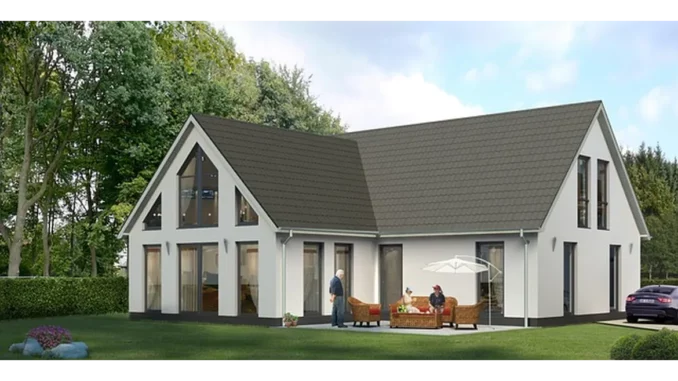
In a recent discussion with Evelyn Thompson, a lead project manager at Metaroom by Amrax, the potential of VR and AI visualisation in addressing Britain’s retrofit challenge came into sharp focus. Evelyn, characterised by her calm demeanour and extensive expertise, has been pivotal in Metaroom’s innovative advancements since its inception. Her insights are especially valuable in deciphering the complexities of retrofitting the UK’s ageing housing stock.
Successful low-energy building design hinges on careful planning. Focus360 Energy can help.
“Britain’s homes are some of the oldest and least energy-efficient in Western Europe,” Evelyn began. “This poses not only an economic strain on homeowners but also a significant environmental concern. Our 30 million homes contribute over 21% of the country’s total carbon emissions.” She highlighted the urgency of retrofitting these homes to meet the UK’s legally binding climate change targets, pointing out that the government aims for most homes to achieve an Energy Performance Certificate (EPC) rating of C or above by 2035. Presently, 19 million homes fall short of this target.
Evelyn elaborated on the inherent difficulties in retrofitting older buildings. “Unlike new constructions designed with energy efficiency in mind, retrofitting older structures presents numerous challenges. These buildings often have structural limitations and hidden issues such as outdated electrical systems or structural weaknesses, which can significantly complicate and delay retrofit projects.” Despite these challenges, she expressed optimism about the role of emerging technologies in mitigating these obstacles. “Advances in design and AI visualisation tools are game-changers,” she stated. “3D modelling and visualisation have been increasingly utilised in design and construction. With the growth of AI, designers and building owners can gain unprecedented insights into building usage, from analysing traffic flows to identifying heat loss through specific windows.”
Evelyn’s enthusiasm was palpable as she detailed how AI and spatial data could revolutionise the retrofit process. “We can collect an astonishing number of data points that provide deep insights into building usage. This information, combined with predictive analytics, can inform design changes that enhance ergonomics, efficiency, and functionality.” She underscored the collaborative potential of these tools, noting that virtual modelling allows stakeholders to visualise proposed changes and design ideas in practice. Shared digital representations enable all parties involved, from owners to building managers, to simulate and analyse design and construction decisions in real-time, ensuring alignment of vision and reducing costly errors.
She illustrated the practical benefits of this technology, explaining that numerous adjustments can be made to align theoretical designs with practical realities. “Experiencing a design in 3D, VR, or AR is vastly different from viewing it on a flat screen or piece of paper. This ease of collaboration and experimentation significantly reduces the time, cost, and risk associated with designing or renovating residences,” she noted. Public authorities and building owners can now integrate a safe, cost-effective solution with complex considerations like sustainability. Every need can be factored into the design and adequately balanced to achieve the best possible outcome.
Evelyn also touched on the potential for incremental changes, such as experimenting with new lighting solutions that reduce costs while improving the health of living spaces. “Public housing owners or contractors no longer have to guess the impact or undergo lengthy pilot projects. Through virtualisation, they can mitigate risk, tailor solutions to each building, and implement changes at reduced costs and timelines.” She discussed the expanding role of Building Information Modelling (BIM), which has grown to encompass models for maintenance and space utilisation. Promising products like Nemetschek dTwin, Autodesk Tandem, and Catenda Duo have gained significant traction in this segment.
Looking ahead, Evelyn was excited about the concept of ‘living buildings.’ “Eventually, most buildings will be embedded with smart devices and beacons that monitor energy consumption and other factors in real-time. Combined with AI automation and visualisation platforms, we will possess incredibly powerful tools to create ultra-efficient, highly responsive buildings that use considerably less energy and resources to maintain.”
As Evelyn spoke, it became evident that integrating AI and VR into the retrofit process is not merely a possibility but a necessity. Leveraging technology to implement small yet impactful changes across the existing housing stock will help meet net zero targets, address fuel poverty, extend the longevity of buildings, enhance residents’ health and wellbeing, and reduce overall construction and maintenance costs. The future of retrofitting lies in the seamless integration of advanced technologies to create a more sustainable, efficient, and livable built environment.


Be the first to comment